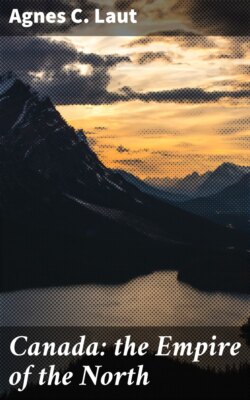Читать книгу Canada: the Empire of the North - Agnes C. Laut - Страница 29
На сайте Литреса книга снята с продажи.
HUDSON COAT OF ARMS
ОглавлениеNot less disastrous were English efforts than French to colonize the New World. Up to 1610 Canada's story is, in the main, a record of blind heroism, dogged courage, death that refused to acknowledge defeat.
Four hundred French vessels now yearly come to reap the harvest of the sea; in and out among the fantastic rocks of Gaspé, pierced and pillared and scooped into caves by the wave wash, where fisher boats reap other kind of harvest, richer than the silver harvest of the sea—harvest of beaver, and otter, and marten; up the dim amber waters of the Saguenay, within the shadow of the somber gorge, trafficking baubles of bead and red print for furs, precious furs. Pontgravé, merchant prince, comes out with fifty men in 1600, and leaves sixteen at Tadoussac, ostensibly as colonists, really as wood lopers to scatter through the forests and learn the haunts of the Indians. Pontgravé comes back for men and furs in 1601, and comes again in 1603 with two vessels, accompanied by a soldier of fortune from the French court, who acts as geographer—Samuel Champlain, now in his thirty-sixth year, with service in war to his credit and a journey across Spanish America.
The two vessels are barely as large as coastal schooners; but shallow draft enables them to essay the Upper St. Lawrence far as Mount Royal, where Cartier had voyaged. Of the palisaded Indian fort not a vestige remains. War or plague has driven the tribe westward, but it is plain to the court geographer that, in spite of former failures, this land of rivers like lakes, and valleys large as European kingdoms, is fit for French colonists.
